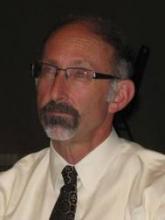ESTES PARK, COLO. – Improving the unacceptably low rates of blood pressure control in the two-thirds of Americans older than age 60 years who have hypertension will require physicians to discard some enduring myths and ill-advised treatment approaches, Dr. Philip S. Mehler said at a conference on internal medicine update sponsored by the University of Colorado at Denver, Aurora.
"This is really a winnable battle we have in health care," said Dr. Mehler, professor of medicine at the university and chief medical officer at Denver Health.
Only half of the more than 73 million hypertensive adults have good blood pressure control, according to data from the 2008 NHANES (National Health and Nutrition Examination Survey). To boost that rate, physicians will have to reconsider the following widespread treatment misconceptions:
• Monotherapy is the best initial approach to reducing blood pressure. "The way many of us were trained in the past, you take one blood pressure pill and keep doubling it and tripling it and quadrupling it before you move to another class, because in general we try to treat hypertension with one drug. Now we know, in one of the biggest paradigm shifts in hypertension control, that what we need to do is replace that practice and combine drugs from different classes without necessarily maximizing the dose of any one of those classes. That’s a big change, and it needs to be insinuated in your practice," the internist urged.
Fully 80% of the efficacy of most antihypertensive agents is achieved at 50% of the maximum dose, he said. The one exception to that rule is diuretics. Diuretics are underutilized, as evidenced by the fact that they accounted for only 26% of total blood pressure drugs dispensed in 2010. And they are underdosed as well: Diuretic dosing needs to be increased to optimize diuresis, as volume overload is such a common feature in hypertension.
"The message from JNC7 [Seventh Report of the Joint National Committee on Prevention, Detection, Evaluation, and Treatment of High Blood Pressure], and the message that will be in JNC8, which should finally be out this November, is that a diuretic should be the first or second medication you use in patients with hypertension," Dr. Mehler said.
He noted that a key message in JNC7 is that if a patient’s blood pressure is more than 20/10 mm Hg above goal, treatment should be initiated with two agents, one of which should usually be a thiazide-type diuretic.
• Myth No. 1: Diuretics are interchangeable. There’s a good argument for increased preferential usage of chlorthalidone over hydrochlorothiazide. Dr. Mehler called chlorthalidone "the ideal once-a-day drug" for hypertension because of its pharmacokinetics; it has a half-life of 30 hours, compared with 8 hours for hydrochlorothiazide. A 12.5-mg dose of chlorthalidone is equivalent to 25 mg of hydrochlorothiazide. Potassium wasting occurs in 15%-30% of patients within their first 2 weeks on chlorthalidone. Unfortunately, unlike hydrochlorothiazide, chlorthalidone is not available in any of the convenient combination products.
• Myth No. 2: Beta-blockers are tops. Noting that 22% of blood pressure drug dispensing in 2010 was for beta-blockers, Dr. Mehler commented, "I’m a bit surprised that almost one-quarter of the blood pressure pills prescribed in America are beta-blockers; there’s less and less evidence supporting the use of beta-blockers for pure, garden-variety hypertension."
Beta-blockers are particularly ineffective in treating high blood pressure in the elderly, in whom the disease most often takes the form of isolated systolic hypertension, which results from conduit stiffness, a different mechanism than that of mixed systolic/diastolic hypertension. The best multidrug combinations for isolated systolic hypertension include diuretics; ACE inhibitors or angiotensin receptor blockers; dihydropyridine calcium channel blockers; and an aldosterone antagonist, he said.
• Myth No. 3: There’s no J-curve. Whether or not a J-curve (that is, a level of blood pressure lowering beyond which the mortality risk reverses and starts climbing) exists in hypertension therapy is a long-standing argument. The latest thinking is that there is indeed a J-curve, and that it applies to diastolic – but not to systolic – blood pressure. It is critical to stop intensifying therapy once a patient’s diastolic pressure falls below 65 mm Hg, even if the systolic pressure remains above goal, according to Dr. Mehler.
• Myth No. 4: Salt, schmalt! The average American consumes more than 5 g of sodium per day. American Heart Association guidelines recommend reducing that to 1.5 g.
"Salt restriction is an often overlooked aspect of therapy, but it’s as beneficial as smoking cessation and adding another class of medication to treat hypertension," he asserted.


